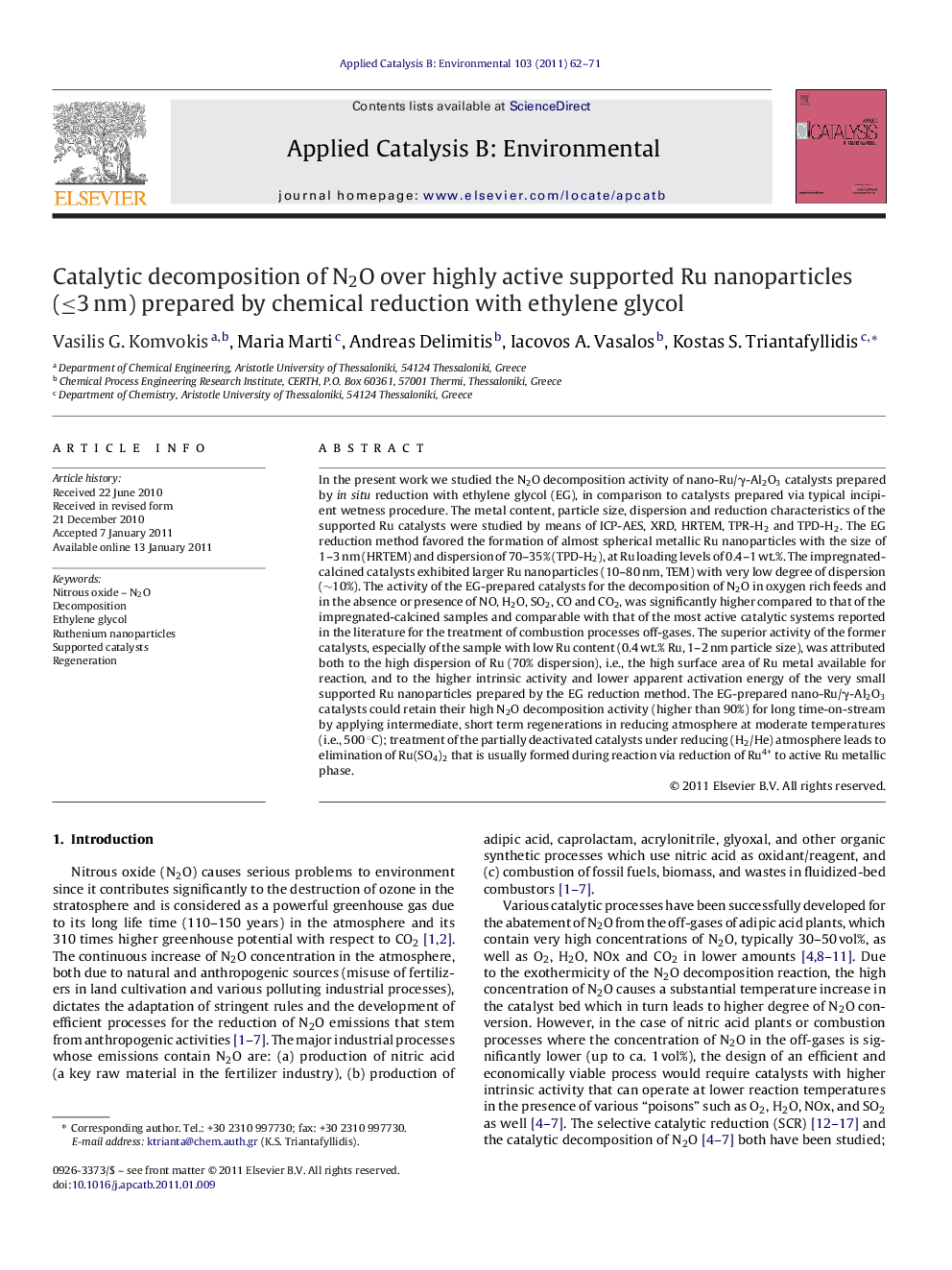| کد مقاله | کد نشریه | سال انتشار | مقاله انگلیسی | نسخه تمام متن |
|---|---|---|---|---|
| 46993 | 46455 | 2011 | 10 صفحه PDF | دانلود رایگان |

In the present work we studied the N2O decomposition activity of nano-Ru/γ-Al2O3 catalysts prepared by in situ reduction with ethylene glycol (EG), in comparison to catalysts prepared via typical incipient wetness procedure. The metal content, particle size, dispersion and reduction characteristics of the supported Ru catalysts were studied by means of ICP-AES, XRD, HRTEM, TPR-H2 and TPD-H2. The EG reduction method favored the formation of almost spherical metallic Ru nanoparticles with the size of 1–3 nm (HRTEM) and dispersion of 70–35% (TPD-H2), at Ru loading levels of 0.4–1 wt.%. The impregnated-calcined catalysts exhibited larger Ru nanoparticles (10–80 nm, TEM) with very low degree of dispersion (∼10%). The activity of the EG-prepared catalysts for the decomposition of N2O in oxygen rich feeds and in the absence or presence of NO, H2O, SO2, CO and CO2, was significantly higher compared to that of the impregnated-calcined samples and comparable with that of the most active catalytic systems reported in the literature for the treatment of combustion processes off-gases. The superior activity of the former catalysts, especially of the sample with low Ru content (0.4 wt.% Ru, 1–2 nm particle size), was attributed both to the high dispersion of Ru (70% dispersion), i.e., the high surface area of Ru metal available for reaction, and to the higher intrinsic activity and lower apparent activation energy of the very small supported Ru nanoparticles prepared by the EG reduction method. The EG-prepared nano-Ru/γ-Al2O3 catalysts could retain their high N2O decomposition activity (higher than 90%) for long time-on-stream by applying intermediate, short term regenerations in reducing atmosphere at moderate temperatures (i.e., 500 °C); treatment of the partially deactivated catalysts under reducing (H2/He) atmosphere leads to elimination of Ru(SO4)2 that is usually formed during reaction via reduction of Ru4+ to active Ru metallic phase.
Figure optionsDownload as PowerPoint slideResearch highlights▶ Catalysts with highly dispersed Ru nanoparticles (1–3 nm) by ethylene glycol reduction. ▶ Decomposition of N2O over nano-Ru/γ-Al2O3 is a structure–sensitive reaction. ▶ Nano-Ru/γ-Al2O3 is highly active for N2O decomposition (combustion off-gases). ▶ Nano-Ru/γ-Al2O3 is deactivated by water and NO (reversibly) and SO2 (irreversibly). ▶ Nano-Ru/γ-Al2O3 can be regenerated under thermal treatment with hydrogen.
Journal: Applied Catalysis B: Environmental - Volume 103, Issues 1–2, 14 March 2011, Pages 62–71